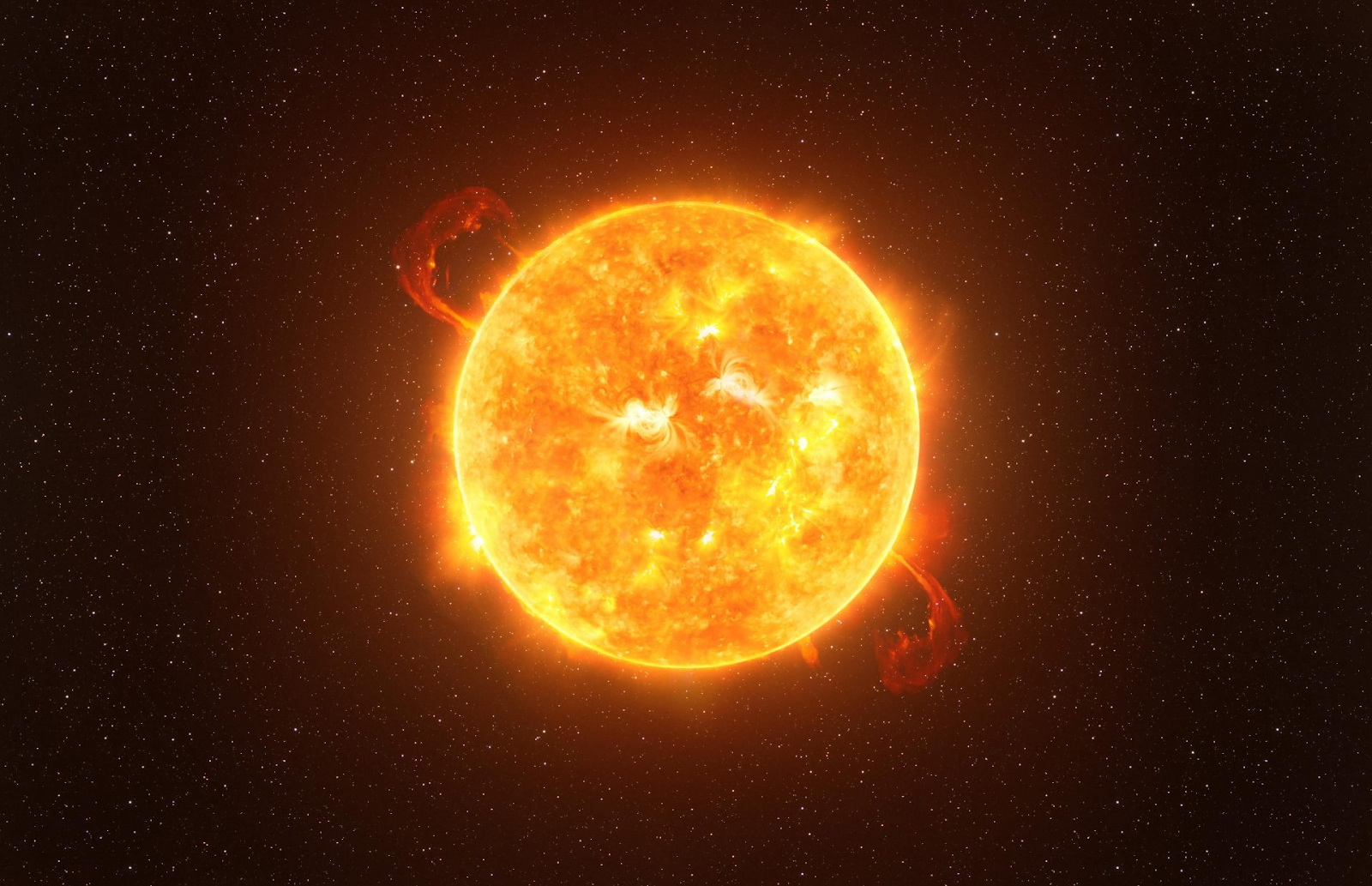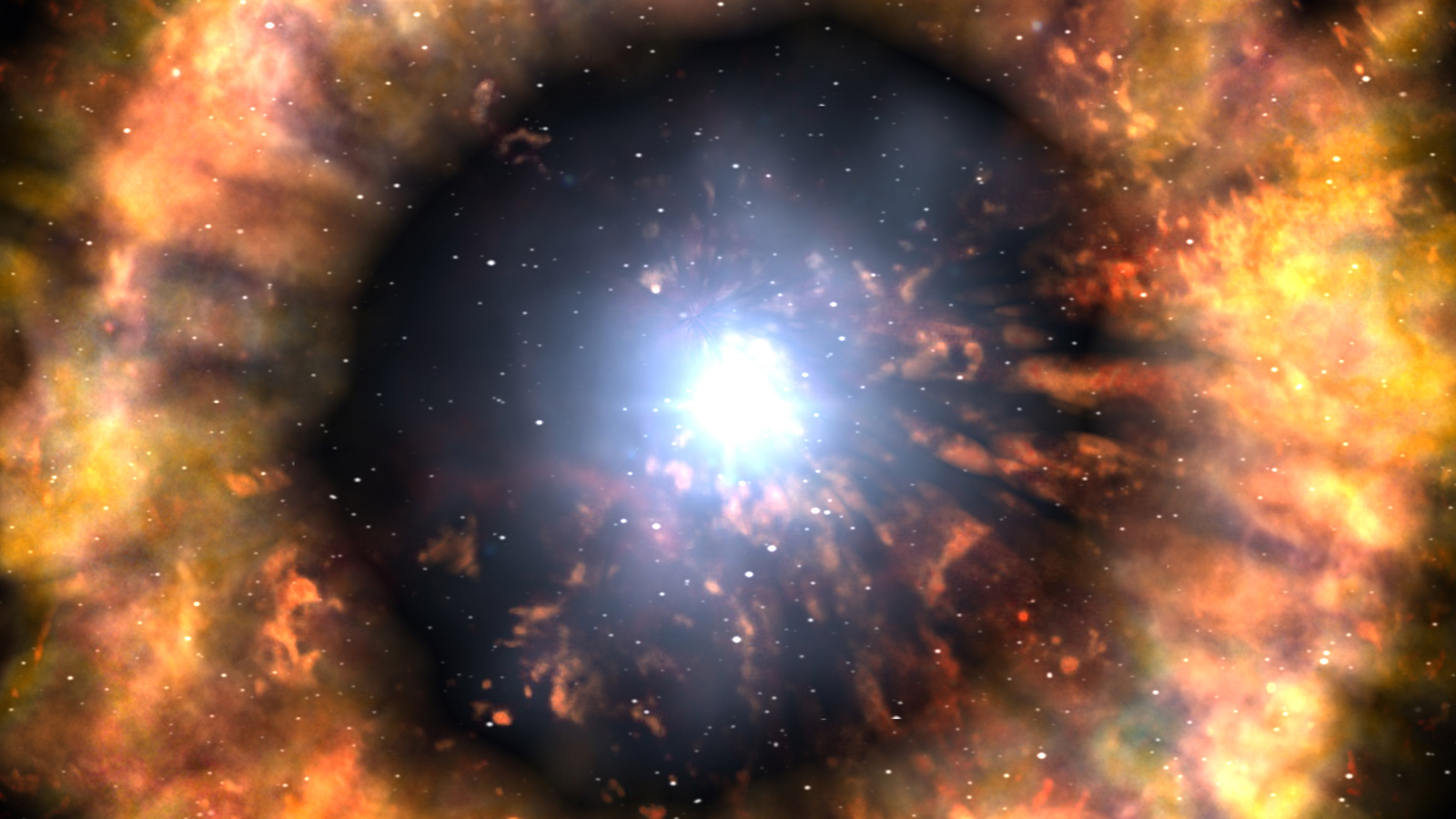The Life Cycle of A Star
Imagine a starry night. Millions of stars in the night sky. Magical isn't it. Have you ever wondered how these stars are born..how they grow.. and how they die? Wait..do they die?
Let me walk you through The Life Cycle of a Star.. by the end of this article you will have all the answers. Here we go...
First, let's see what we call a star?
A star is a glowing ball of gas. And they’re made of Hydrogen and Helium, held together by its gravity. Nuclear fusion reactions in its core support the star against gravity and produce photons, heat, and small amounts of heavier elements. Sun is the closest star to Earth. Stars are classified based on their spectral characteristics, which are determined by their temperature and composition.
Life cycle
All the stars begin life in the same way. First, they form from nebulas to protostars after that they step into their main sequence.
 |
| Crab nebula Source: nasa.gov |
 |
| The fate of different sizes of stars Source: natural-universe.net |
Let me explain them separately one by one.
The life cycle of a medium-sized star
Medium-sized stars spend their dying years as neutron stars. After their death, they might end up as white dwarfs but they’re too small to become black holes.
PROTOSTAR
A protostar is formed from a process known as accretion. The gravity of the nebula starts to pull the gases together into a ball. Then they emit radiation as they get heated because of the gravitational energy. Also, the size of the star depends on how much matter is available in the parent nebula.
 |
| A Protostar Source : kimdeyir.com |
MAIN SEQUENCE
The protostar has become an actual star in its main sequence phase. The star will spend the bulk of its life span in this period of stability, generating light and heat via the fusion of hydrogen into helium for millions of years.
RED GIANT
After millions of years of generating light and heat the star runs out of fuel. And then it starts the process of dying and becomes a red giant. When the hydrogen fuel runs out, the core of the star shrinks and heats up. This causes the outer layers of the star to expand and cool down, turning it into a red giant
 |
| Red Giants and our Sun Source: australiangeographic.com.au |
PLANETARY NEBULA
The red giant blows off its outer layers and they spread into space. Then it forms a ring-shaped or bubble-shaped nebula. When the core of the star emits gas and dust it’s known as a planetary nebula.
 |
| A planetary nebula Source: universetoday.com |
WHITE DWARF
Once a star runs out of its nuclear fuel they become white dwarfs too. When the fuel runs out, the star’s core falls under gravity. The outer layers of the star are emitted into space, leaving behind a hot core that eventually cools to become a white dwarf.
 |
| A white dwarf Source: universetoday.com |
The life cycle of a high-mass star
MAIN SEQUENCE
Normally a high-mass star is three times bigger than our sun. They are the largest, hottest and brightest stars. And they are blue, blue-white, or white in colour. They use their hydrogen fuel very quickly and in that case, they have much more shorter lives than low-mass stars. They also burn more hydrogen than a low-mass star.
RED SUPERGIANT
When a high-mass star runs out of its fuel and begins collapsing, they form red supergiants. They are the coolest supergiants. K-type supergiants are uncommon compared to M-type because they are in a short-lived transition stage and somewhat unstable. Examples of red supergiants are Antares, Betelgeuse, and Mu Cephei.
 |
| Orion's Red Supergiant Source: scienceandtechblog.com |
SUPERNOVA
A supernova is the most enormous explosion that humans have ever seen. It’s a bright, super-powerful explosion of a star. One type of supernova is caused by the ‘last hurrah’ of a star which is in its dying process. This happens when a star five times bigger than our sun goes out with an incredible explosion. When the core of the star cannot hold the star’s outer layers anymore. The outer layers explode outwards in a supernova
 |
| Supernova Source: universetoday.com |
Also sometimes when a white dwarf gains matter from another star until it can no longer support itself. Then it explodes in a supernova. Those white dwarfs are known as vampire stars.
Neutron star
After the explosion what’s left in the star becomes smaller in size [ into the size of a city ]. The star is so dense that if you could bring a teeny little bit of it to Earth it’ll weigh a trillion tons. And that’s known as a neutron star. The final stage of a high-mass star.
 |
| Neuron star Source: newatlas.com |
The commonly known way how a black hole is formed is by a death of a massive star. When they reach their end-stage they continue to collapse under their own gravity till they become black holes.
 |
| The First Black Hole Picture Source: wired.com |
Himaya Perera / himayap2011@gmail.com
Mahamaya Girls' College, Kandy.
Edited by: Isuru Ravisanka

